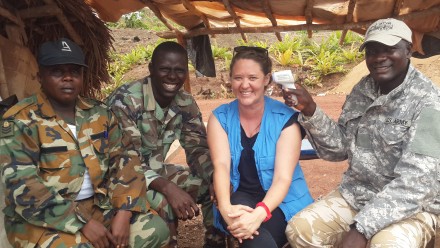Discover NCEPH: 2022-2023
Share
It’s with great pleasure that I write this introduction as the Director of the National Centre for Epidemiology and Population Health.
Returning to the ANU in 2022, this is not the first time I have had the joy of being part of the NCEPH family. As a postdoctoral and research fellow at NCEPH 2003-2007, I worked under the supervision and mentorship of NCEPH’s then Director, the late Professor Tony McMichael, a leading global scholar in environmental epidemiology and a trailblazer in elucidating and communicating the future health impacts of climate change. Tony’s big picture thinking was what first drew me to NCEPH.
Tony understood the role of humans in shaping their environment, and that the extent of our influence had become planetary. He understood our dependency as humans on the Earth’s biosphere, our ultimate life support system. He expanded what it meant to be an epidemiologist over space and time, from making causal inferences from discrete exposures or events in local areas, to looking ahead to predict what could happen in the future using projected changes to the planet’s biosphere.
Importantly, Tony also recognised the influence and interconnectedness of other systems on human health outcomes, the social, Prof Hilary Bambrick. Photo: supplied economic, and cultural contexts in which we live. Cause and effect is often complex, and multiple interacting forces determine how well we can live our lives. NCEPH also celebrates the contributions to population health through the varied lenses and methodologies brought by non-epidemiologists – sociologists, health service researchers, anthropologists, economists, and artists.
NCEPH today continues this interdisciplinary legacy as it works to improve health and health equity, on a scale from local to planetary, with close to 400 staff and students shared across diverse centres and departments.
While this report highlights only some of the achievements of the extraordinary NCEPH team over the last 21 months, it showcases the diversity of our work, the depth of our expertise, and the various ways we create, engage and communicate for impact. You will notice, I’m sure, the original artwork and design throughout this report, by NCEPH’s Alice Wetherell, and the commissioned work by First Nations artists Harley Richards and Tyrown Waigana.
I do hope you enjoy it.

Professor Hilary Bambrick
Director, National Centre for Epidemiology and Population Health
The Australian National University










